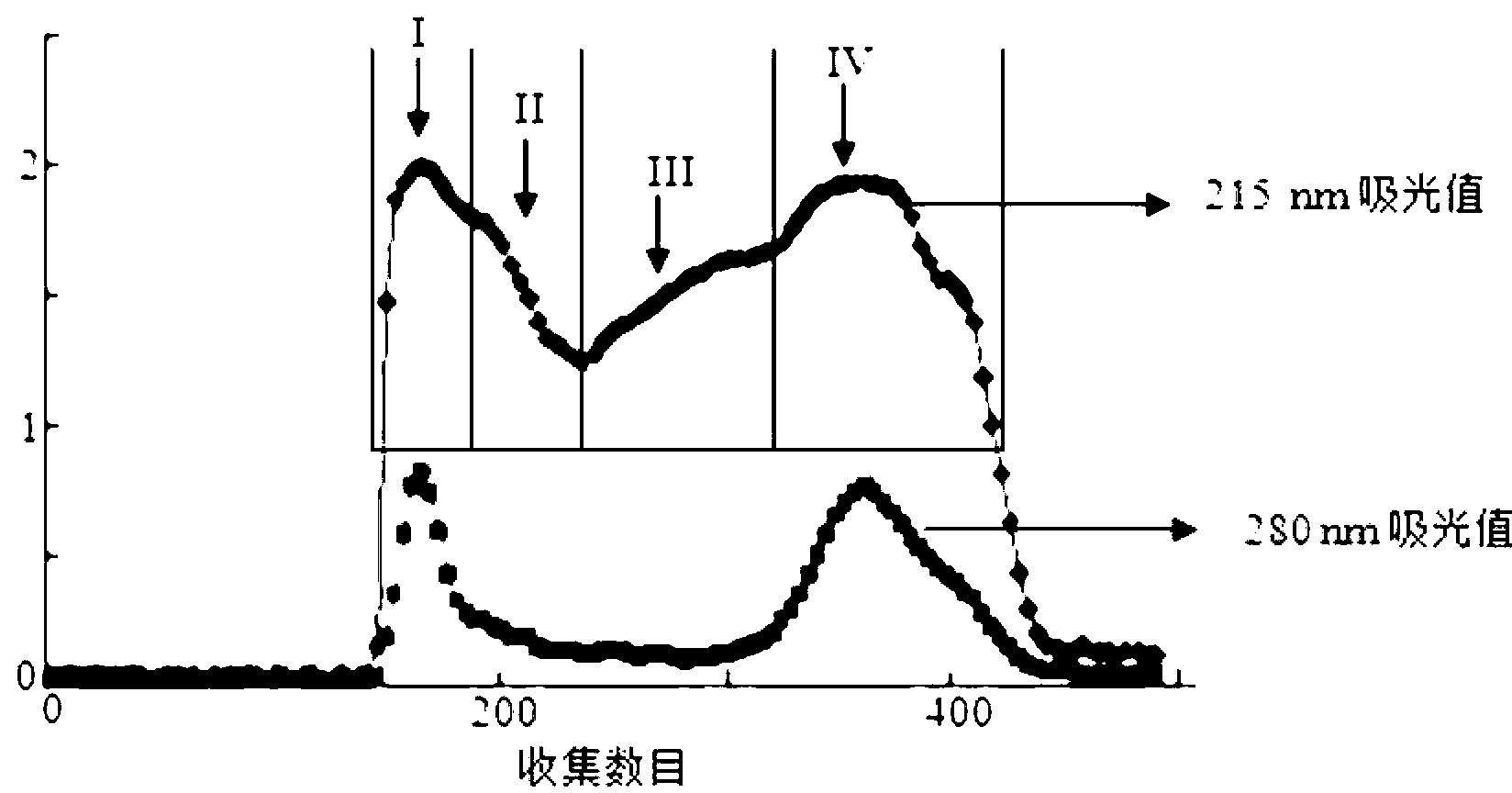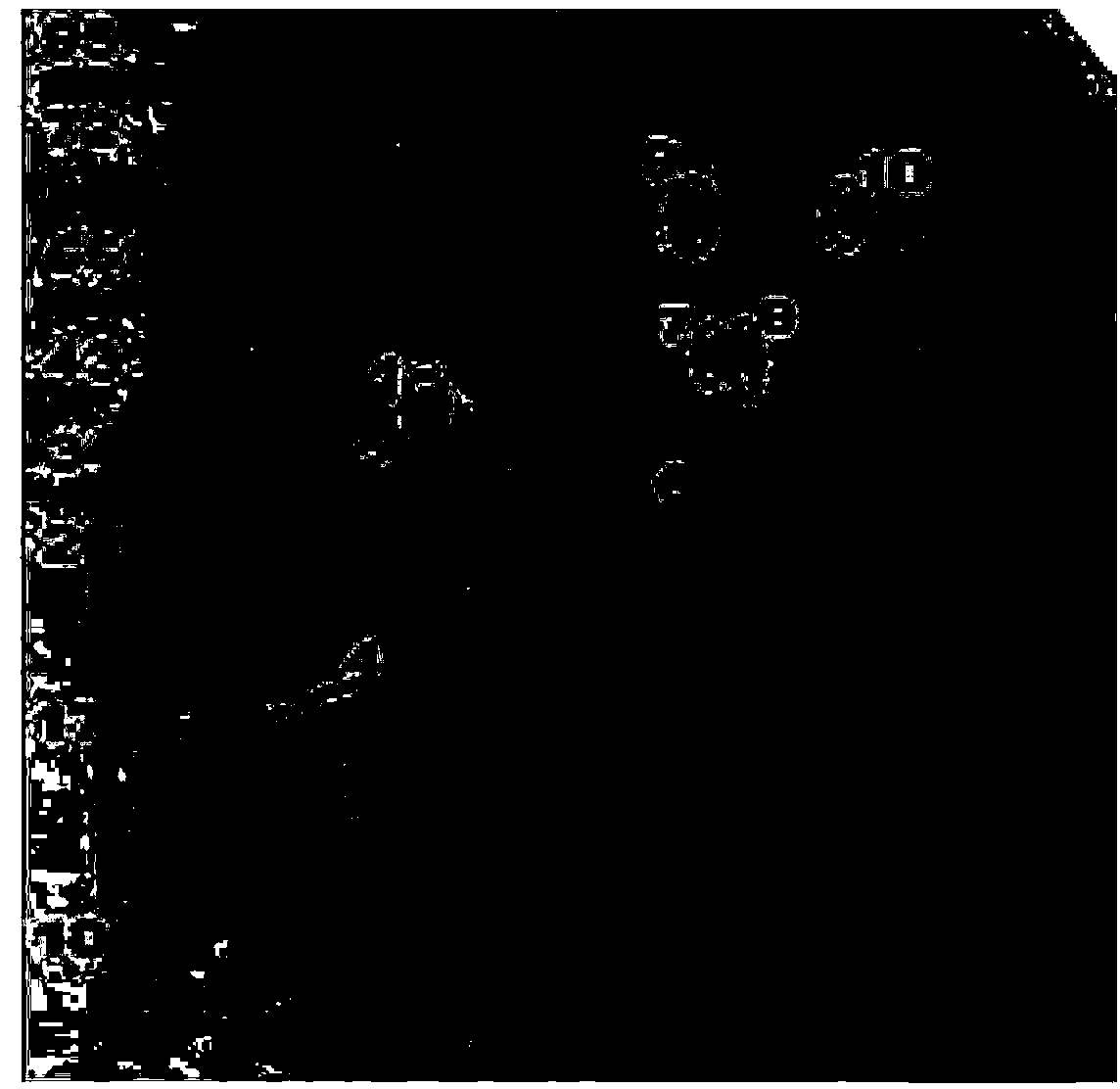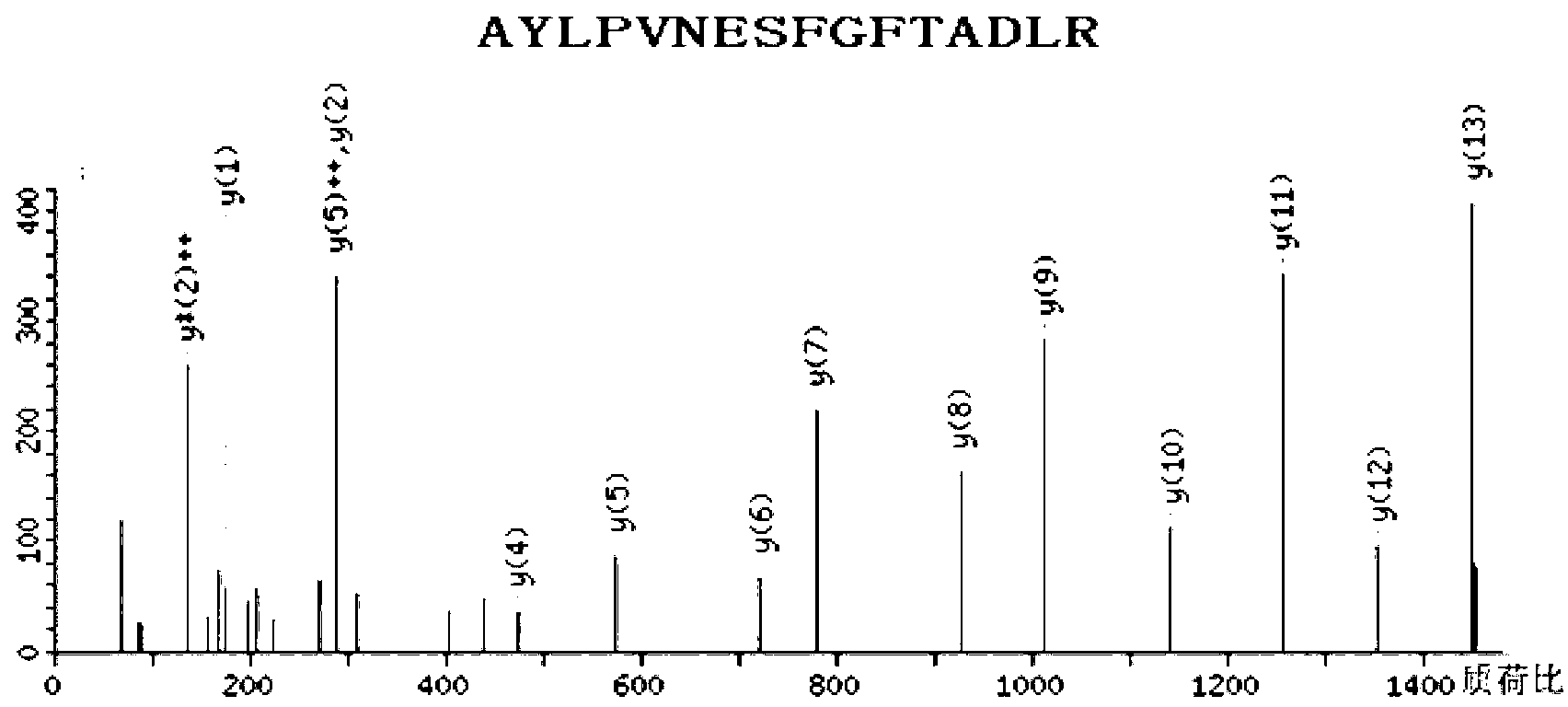Dust mite allergens Derf26 and Derf27 and genes and application thereof
An allergen and dust mite technology, applied in the field of biomedicine, can solve the problems that hinder the standardization and use of dust mite allergen reagents
- Summary
- Abstract
- Description
- Claims
- Application Information
AI Technical Summary
Problems solved by technology
Method used
Image
Examples
Embodiment 1
[0075] Example 1: Identification of Dust Mite Allergen and Determination of its Amino Acid Sequence
[0076] 1. Breeding and collection of dust mites and preparation of dust mite homogenate
[0077] The pure strain of D. farinae was reared in batches under the condition of 25 ℃ and 75% relative humidity with powdered rat food. Because dust mites have the life characteristics of avoiding light, dust mites can be separated from feed by incandescent lighting. For the isolated dust mites, an appropriate amount of 20mM pH 7.8 Tris-HCL can be added for thorough grinding, and then centrifuged at 12000 × g for 30 min to obtain the supernatant.
[0078] 2. Separation and purification of dust mite homogenate, two-dimensional electrophoresis and Western blot detection
[0079] Using the supernatant collected above as a raw material, the sample was loaded on Sephadex-G75 molecular sieve gel chromatography equilibrated with 20 mM pH7.8 Tris-HCL buffer in advance, and eluted with the same...
Embodiment 2
[0095] Example 2: Gene Cloning of Dust Mite Allergens
[0096] 1. Extraction of dust mite total RNA
[0097] A. Weigh about 80 mg of live dust mites, add pre-cooled 1 mL Trizol extract (Invitrogen, USA), and add liquid nitrogen to fully homogenize.
[0098] B. Add 1 / 5 volume of Trizol in chloroform, mix vigorously for about 15 seconds, leave at room temperature for 5 minutes, centrifuge at 12000 rpm for 10 minutes at 4°C, and take the supernatant.
[0099] C. Add an equal volume of isopropanol to the supernatant, leave it at room temperature for 10 minutes, centrifuge at 12,000 rpm for 10 minutes at 4°C, wash the precipitate once with 75% ethanol, and dry it in the air. .
[0100] 2. Purification of dust mite mRNA
[0101] Dust mite mRNA was isolated and purified using PolyATtract from PROMEGA, USA ? mRNA Isolation Systems Kit.
[0102] A. Dissolve 500 μg of dust mite total RNA in 500 μL of DEPC water, put in a water bath at 65°C for 10 min, add 3 μL of Oligo(dT) probe a...
Embodiment 3
[0134] Example 3: Detection of allergenicity of dust mite allergens Der f 26-F and Der f 27-F
[0135] For the same sample in Example 1, it is necessary to run two pieces of two-dimensional electrophoresis, one of which is used for direct staining, and the other is used for Western blot to detect its allergenicity. The specific process is as follows:
[0136] 1: Membrane transfer: Transfer the protein on the 2-D-SDS-PAGE gel to the PVDF membrane under the condition of 200 mA for 2 h using a transfer tank.
[0137] 2: Blocking: The PVDF membrane transferred with protein was blocked with 5% skimmed milk powder at room temperature for 2 hours.
[0138] 3: Primary antibody incubation: Wash the blocked PVDF membrane with PBS, dilute the primary antibody (serum from dust mite allergic patients) 1:20 with 5% skimmed milk powder, and incubate overnight at 4 °C.
[0139] 4: Secondary antibody incubation: The PVDF membrane incubated with the primary antibody was washed with PBS, and the ...
PUM
 Login to View More
Login to View More Abstract
Description
Claims
Application Information
 Login to View More
Login to View More - R&D
- Intellectual Property
- Life Sciences
- Materials
- Tech Scout
- Unparalleled Data Quality
- Higher Quality Content
- 60% Fewer Hallucinations
Browse by: Latest US Patents, China's latest patents, Technical Efficacy Thesaurus, Application Domain, Technology Topic, Popular Technical Reports.
© 2025 PatSnap. All rights reserved.Legal|Privacy policy|Modern Slavery Act Transparency Statement|Sitemap|About US| Contact US: help@patsnap.com



